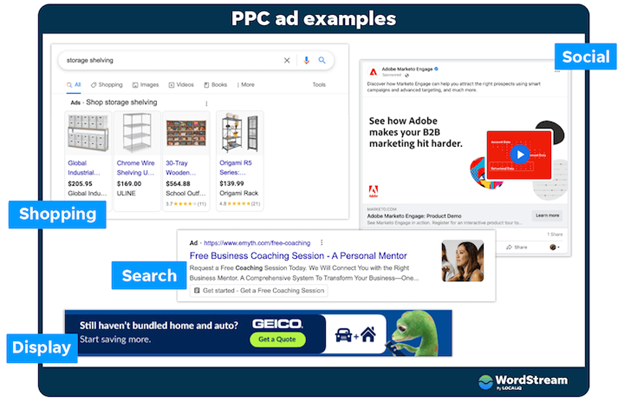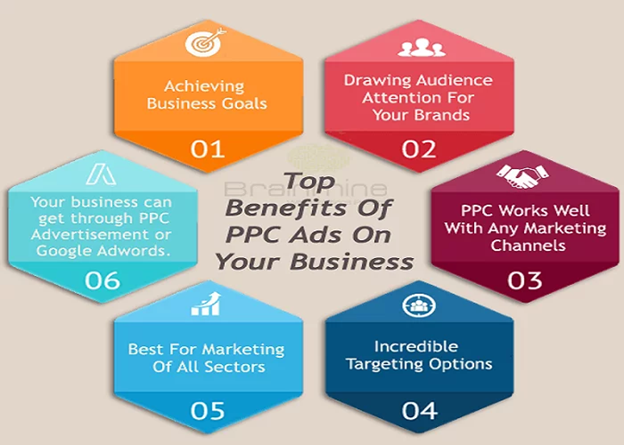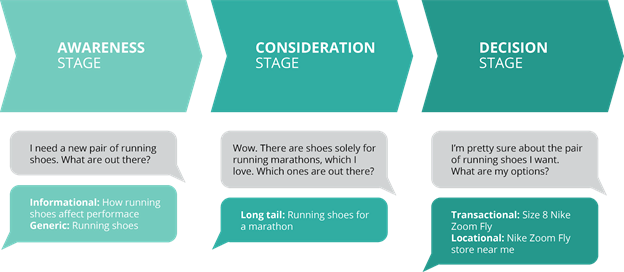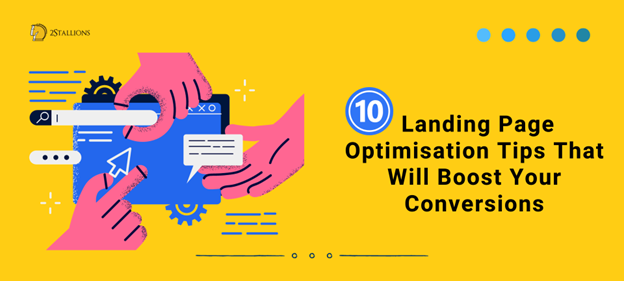SHARE

Pay-per-click (PPC) advertising has become a key tool in the digital marketing landscape. By focusing on specific target audiences, PPC targeting allows businesses to maximise their marketing efforts and reach potential customers effectively. In this article, we will explore the benefits of PPC targeting, the role of keywords, budgeting strategies, and ways to measure the success of your PPC campaigns.
[thrive_leads id=’8334′]
Defining PPC Targeting
Before discussing the advantages of PPC targeting, let’s clarify what it entails. Pay-per-click advertising is a model in which advertisers pay each time users click on their online ads. By targeting specific keywords, demographics, and user interests, PPC campaigns can reach a relevant audience and increase the chances of conversions.
PPC targeting is a powerful tool that allows businesses to fine-tune their advertising efforts. It involves strategically selecting parameters such as age, gender, location, and interests to ensure that ads are shown to the right people at the right time. This level of precision enables advertisers to optimise their advertising budgets and maximise the return on investment.
When it comes to PPC targeting, one of the key factors to consider is keyword selection. By bidding on relevant keywords, businesses can increase the visibility of their ads on search engine results pages (SERPs) and other websites. This means that when a user searches for a specific keyword, the search engine displays ads that are highly relevant to their query. As a result, advertisers have a higher chance of capturing the attention of potential customers.
The Basics of Pay-Per-Click Advertising
PPC advertising allows businesses to display their ads on search engine results pages (SERPs) and other websites. Advertisers bid on keywords to have their ads rank higher in search results. When a user searches for a keyword, the search engine displays relevant ads, and advertisers pay only when their ad is clicked.Let’s take a closer look at how the bidding process works. Advertisers participate in an auction where they compete with other advertisers for ad placement. The bid amount represents the maximum amount an advertiser is willing to pay for a click on their ad.
However, winning the auction is not solely based on the bid amount. Search engines also take into account factors such as ad relevance, landing page quality, and historical performance when determining ad placement. Once an ad is displayed, advertisers have the opportunity to attract users with compelling ad copy and engaging visuals.
The goal is to entice users to click on the ad and visit the advertiser’s website. This is where the effectiveness of PPC targeting comes into play. By targeting specific demographics, locations, and devices, advertisers can ensure that their ads are shown to the most relevant audience, increasing the likelihood of attracting potential customers.
How PPC Targeting Works
PPC targeting enables businesses to narrow down their ad reach to specific demographics, locations, and devices. By using parameters such as age, gender, and interests, advertisers can target their ads to appear only to users who are likely to be interested in what they offer. This precision helps in optimising advertising budgets and getting the most out of each click.
Let’s explore the different parameters that can be used for PPC targeting:
- Demographics: Advertisers can target their ads based on factors such as age, gender, income level, and education. This allows businesses to tailor their messaging to specific demographic groups and increase the relevance of their ads.
- Locations: PPC targeting allows businesses to focus their ads on specific locations. Advertisers can ensure that users see their ads in the desired location, whether targeting a particular city, region, or country.
- Devices: With the increasing use of mobile devices, advertisers can choose to target their ads specifically to users on smartphones or tablets. This level of device targeting ensures that ads are displayed in a format that is optimised for the user’s device, providing a seamless browsing experience.
- Interests: Advertisers can target their ads based on user interests by analysing user behaviour and online activities. This allows businesses to reach users who have shown a specific interest in a particular topic or industry, increasing the chances of engagement and conversions.
By combining these targeting parameters, advertisers can create highly tailored campaigns that are designed to reach their ideal audience. This level of customisation not only increases the effectiveness of PPC advertising but also helps businesses make the most out of their advertising budgets.
PPC targeting is a powerful tool that allows businesses to reach a relevant audience and increase the chances of conversions. Advertisers can optimise their advertising efforts and maximise the return on investment by strategically selecting parameters such as demographics, locations, and interests. So, next time you plan a PPC campaign, leverage the power of targeting to achieve your advertising goals.
The Advantages of PPC Targeting
There are several benefits to incorporating PPC targeting into your digital marketing strategy. Let’s explore some of them below:
Immediate Results With PPC
Unlike traditional marketing methods, PPC campaigns can generate instant results. Once your ads go live, they start driving traffic to your website, increasing your chances of conversions and sales. You can also control when and where your ads appear, enabling you to reach potential customers at the right time. Imagine launching a new product or service and wanting to get the word out quickly. With PPC targeting, you can create an ad campaign and run it within hours. Potential customers can see your ads and immediately click through to your website. It’s like having a virtual sales team working around the clock to promote your business.
Furthermore, PPC platforms provide real-time data and analytics, allowing you to monitor the performance of your campaigns and make adjustments on the fly. This level of agility and control gives you the power to optimise your ads for maximum effectiveness.
Enhancing Brand Exposure
PPC targeting allows you to increase your brand’s visibility by displaying your ads to users who are actively searching for relevant products or services. Appearing at the top of search results establishes your brand as a credible and trustworthy option, ultimately boosting brand exposure and recognition.
Think about it: when a user searches for a specific product or service, they are already in a buying mindset. By strategically placing your ads in front of these users, you are positioning your brand as a solution to their needs. This not only increases the chances of them clicking on your ad but also creates a positive association between your brand and their search intent.
Moreover, PPC targeting allows you to target specific keywords related to your industry. This means that even if users are not actively searching for your brand, they can still discover it through relevant search terms. By consistently appearing in search results, you can build brand recognition and establish yourself as a leader in your industry.
Reaching the Right Audience
One of the key benefits of PPC targeting is the ability to reach your target audience precisely. By specifying parameters such as location, interests, and demographics, you can ensure that your ads are displayed to users who are most likely to be interested in what you have to offer. This precise targeting results in higher click-through rates and increased chances of conversions.
Imagine this scenario: you run a local bakery and want to attract customers in your area. With PPC targeting, you can set your ads to only appear to users within a specific radius of your bakery. This means that you are not wasting ad spend on users who are outside your target market. Instead, you are focusing your budget on reaching the people who are most likely to visit your bakery and make a purchase.
Furthermore, PPC platforms provide detailed audience insights, allowing you to understand the demographics and interests of your target audience. Armed with this information, you can create highly tailored ad campaigns that resonate with your audience and drive higher engagement.
PPC targeting offers a range of advantages for businesses looking to enhance their digital marketing efforts. From immediate results and brand exposure to reaching the right audience, PPC targeting can help you achieve your marketing goals effectively and efficiently.
The Role of Keywords in PPC Targeting
Keywords play a vital role in PPC targeting. Let’s discuss their importance and how they can maximise the effectiveness of your PPC campaigns.
Importance of Keyword Research
Thorough keyword research is the foundation of successful PPC campaigns. By identifying the right keywords, you can ensure that your ads are displayed to users who are actively searching for products or services similar to yours. Utilise keyword research tools to find relevant, high-performing keywords with a good balance of search volume and competition.
Long-tail Keywords and Their Benefits
Long-tail keywords are longer, more specific keyword phrases that target niche markets. While they may have lower search volumes compared to broader keywords, they tend to attract highly targeted traffic and have better conversion rates. Incorporating long-tail keywords into your PPC targeting strategy can result in more qualified leads and increased return on investment (ROI).
Budgeting For PPC Campaigns
Effective budget management is crucial for successful PPC campaigns. Let’s explore some strategies to optimise your budget and drive desired results.
Understanding Cost-Per-Click
Cost-per-click (CPC) refers to the amount you pay each time a user clicks on your ad. Setting a realistic CPC bid that aligns with your advertising goals and budget is essential. Monitoring and adjusting your CPC bid regularly can help you balance ad visibility and cost-effectiveness.
Strategies For Budget Management
When managing your PPC budget, consider allocating funds based on performance. Identify which campaigns, keywords, or ads are driving the most conversions and allocate more budget towards them. Regularly monitor and update your budget allocation to ensure that you are maximising your return on investment.
Measuring the Success of PPC Targeting
Measuring the success of your PPC campaigns is essential to understanding their impact and optimising future efforts. Let’s explore some key performance indicators and analytics tools to help you gauge the success of your campaigns.
Key Performance Indicators for PPC
Key performance indicators (KPIs) help you track and measure the effectiveness of your PPC campaigns. KPIs such as click-through rate (CTR), conversion rate, and return on ad spend (ROAS) provide insights into your campaign’s performance. Regularly analysing these metrics allows you to identify areas for improvement and make data-driven decisions.
Interpreting PPC Analytics
Analytics tools like Google Analytics provide detailed data on your PPC campaigns. Analysing metrics such as bounce rate, time on page, and click paths can give valuable insights into user behaviour and help you optimise your campaigns accordingly. Reviewing and interpreting these analytics regularly will help refine your targeting and maximise your campaign’s success.
Conclusion
PPC targeting offers significant benefits in reaching the right audience, enhancing brand exposure, and delivering immediate results. By understanding the role of keywords, effectively managing your budget, and measuring the success of your campaigns, you can optimise your PPC targeting strategy. Incorporate these tactics into your overall digital marketing efforts to drive qualified traffic, increase conversions, and grow your business.
[thrive_leads id=’3729′]
Frequently Asked Questions About PPC Targeting
What is PPC targeting?
How do you set PPC targets?
What is the strategy of PPC?
Your PPC strategy can be as simple as focusing on driving awareness via Google (where your target customers frequently search for high-volume keywords related to your niche) and Facebook (the social media platform your target customers use the most frequently)
How do I target the right audience on PPC ads?
- Income level
- Parental status
- Nationality/ethnicity (which Facebook got in trouble for)
- Geographic location
- Language
- Relationship status
- Education level
- Work/career
What percentage of clicks do PPC ads get?
PPC ads in search results account for 45% of page clicks. Nearly 75% of people say ads make it easier to find what they’re looking for. Visitors that arrive at your site via a PPC ad are 50% more likely to make a purchase than organic visitors. Search PPC ads can increase brand awareness by as much as 80%.
















